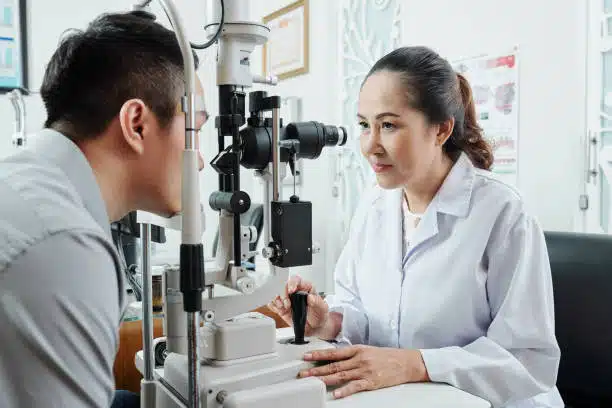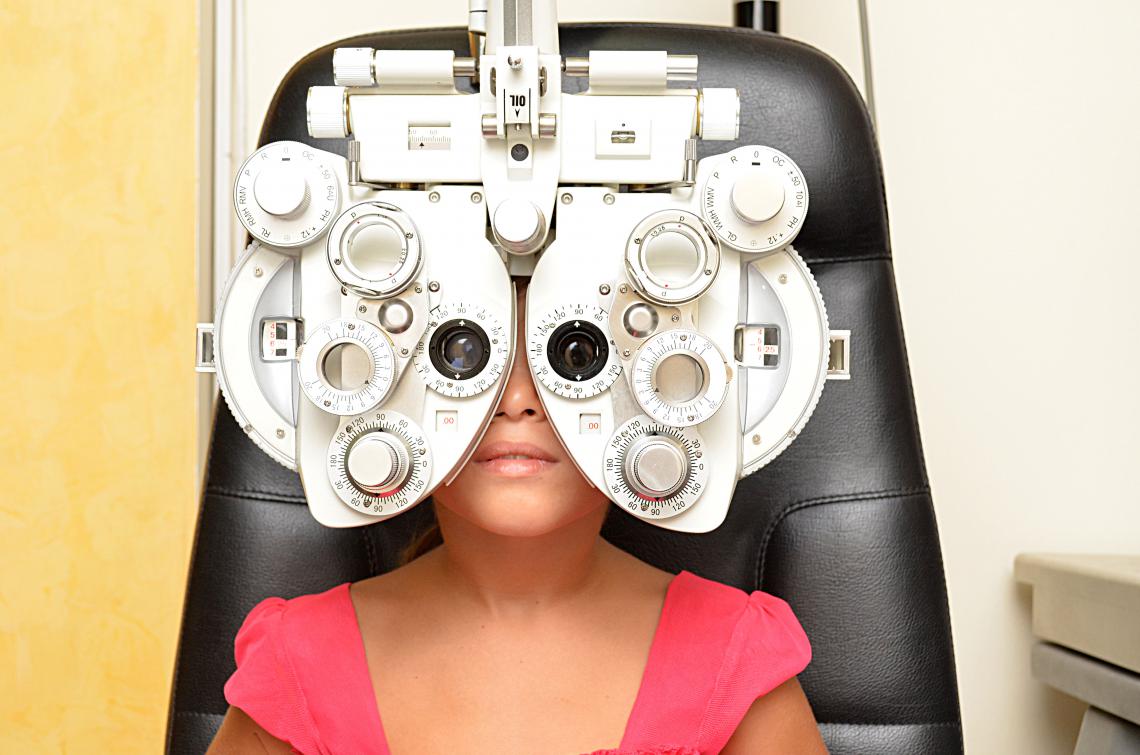Just How an Eye Doctor Can Change Your Vision Health in Chino
Just How an Eye Doctor Can Change Your Vision Health in Chino
Blog Article
Checking Out the Most Recent Technical Advancements in Optometry and What They Mean for Optometrists
In the ever-evolving field of optometry, recent technological innovations are reshaping how professionals come close to eye treatment. From the precision of Optical Comprehensibility Tomography to the nuanced understandings offered by AI-driven diagnostic tools, these advancements are setting new requirements in client assessment and therapy. Teleoptometry is poised to redefine access, guaranteeing that knowledge transcends geographical constraints. As these innovations penetrate the method, optometrists are encountered with the difficulty of welcoming these devices to boost patient end results. Yet, the concern stays: just how will these technological changes redefine the functions and duties within the profession?
Innovations in Diagnostic Equipment
Advancing the field of optometry, developments in diagnostic tools have changed the way eye care experts assess and identify eye conditions and visual disabilities. The past decade has actually seen significant technical innovations, making it possible for even more thorough and precise assessments.
Another key innovation is the introduction of advanced corneal topography systems, which map the surface area curvature of the cornea with accuracy. These tools are particularly valuable for suitable call lenses and detecting corneal conditions. Additionally, digital retinal imaging has actually transformed standard ophthalmoscopy, using comprehensive, breathtaking sights of the retina that promote comprehensive aesthetic examinations.
The growth of wavefront aberrometry has likewise been crucial, allowing the evaluation of refractive mistakes with unequaled precision (Optometrist Chino). This technology assists in tailoring rehabilitative lenses and boosting medical outcomes for refractive surgeries. Collectively, these analysis innovations encourage optometrists to deliver remarkable individual care, making sure very early treatment and tailored treatment strategies, ultimately enhancing aesthetic health and wellness results
AI in Person Monitoring
Building on the structure of cutting-edge analysis devices, the unification of fabricated knowledge (AI) in individual monitoring stands for a transformative leap for optometry. AI systems are significantly utilized to improve effectiveness, accuracy, and customization in individual care.
Moreover, AI-driven platforms facilitate structured client communications and management procedures. Automated organizing, virtual assessments, and personalized follow-up plans not just enhance individual complete satisfaction however also maximize time administration for professionals. These systems can triage individuals based upon the necessity of their conditions, guaranteeing that those in critical demand receive timely interest.
Moreover, AI enhances decision-making by giving optometrists with evidence-based recommendations and therapy pathways. By incorporating data from digital health records, AI tools provide insights that inform professional decisions, reducing the risk of mistakes and improving patient results. As AI remains to advance, its duty in client administration will likely broaden, improving the landscape of optometric treatment.
Developments in Retinal Imaging
In the realm of optometry, retinal imaging has seen remarkable technical advancements that are enhancing analysis capabilities and person treatment. Developments such as Optical Coherence Tomography (OCT) and fundus digital photography have actually changed just how optometrists picture and evaluate the retina. OCT, specifically, offers high-resolution, cross-sectional photos of the retina, permitting the detailed exam of its layers. This ability is invaluable for very early detection and monitoring of conditions like glaucoma, diabetic person retinopathy, and age-related macular degeneration.
Boosted imaging techniques like OCT angiography are additional refining analysis precision. This non-invasive technique maps blood flow in the retina, supplying essential insights right into vascular health without the need for dye shots. Furthermore, flexible optics modern technology is being incorporated right into retinal imaging systems to deal with eye aberrations, delivering unmatched photo clearness. Such advancements promote the recognition of minute retinal changes that might symbolize condition progression.
Additionally, developments in fabricated knowledge are increasing retinal imaging by allowing automated evaluation of large datasets. These systems aid optometrists in determining patterns a measure of pathology, therefore enhancing analysis precision and efficiency. Jointly, these developments are transforming retinal imaging right into a cornerstone of contemporary eye treatment, enhancing outcomes and broadening therapeutic opportunities.
Teleoptometry's Expanding Duty
Teleoptometry is progressively becoming an important component of eye care, driven by developments in electronic interaction and diagnostic devices. As optometry embraces digital makeover, teleoptometry facilitates remote appointments, permitting eye doctors to extend their solutions beyond typical limits. This is specifically useful in rural and underserved locations where access to specialized eye treatment is commonly minimal. By leveraging high-resolution video clip conferencing and advanced retinal imaging, eye doctors can carry out comprehensive eye examinations from afar, making certain timely diagnosis and therapy.
The integration of fabricated intelligence (AI) further enhances teleoptometry, allowing the evaluation of aesthetic data and helping in the discovery of eye conditions such as glaucoma and diabetic retinopathy. AI-powered formulas can quickly translate intricate imaging data, providing optometrists with valuable insights that boost scientific decision-making.
Furthermore, teleoptometry supports connection of treatment through smooth assimilation with digital wellness records (EHRs), enabling eye doctors to keep detailed individual backgrounds. When consulting with various practitioners., this guarantees that individuals get consistent and individualized care even.
Despite these advantages, difficulties stay, consisting of making certain data safety and managing individual assumptions. However, teleoptometry stands for a substantial stride towards more easily accessible, find this reliable, and patient-centered eye treatment. As innovation evolves, its role is positioned to broaden better.

Future Fads in Eye Treatment
A myriad of cutting-edge fads is set to improve the future of eye care, driven by technical innovations and the advancing needs of clients. One significant trend is the integration of expert system (AI) in diagnostics, which guarantees to improve the precision and performance of eye examinations. AI algorithms can assess huge amounts of information from retinal images, potentially detecting conditions like diabetic retinopathy and glaucoma earlier than conventional techniques.
In addition, personalized medication is getting traction in optometry, with hereditary screening informing customized treatment plans. This approach aims to maximize individual results by tailoring interventions to individual hereditary profiles. Wearable technology, such as clever call lenses, is likewise on the perspective, providing real-time monitoring of intraocular stress or sugar levels, therefore offering constant understandings right into systemic and ocular wellness.
The fostering of enhanced fact (AR) and virtual truth (VR) in training and person education is one more arising pattern. These technologies supply immersive experiences that can enhance understanding and skills both for eye doctors and clients. As these fads develop, optometrists must remain abreast of technological advancements to give innovative care, making certain better person end results and satisfaction in the vibrant landscape of eye treatment.
Conclusion

Collectively, these diagnostic advancements encourage optometrists to deliver premium patient treatment, making sure early treatment and customized therapy methods, eventually improving aesthetic health results.

As these technologies continue to progress, eye doctors should adapt and incorporate them into method, inevitably optimizing operations efficiency and elevating the standard of eye care provided to patients.
Report this page